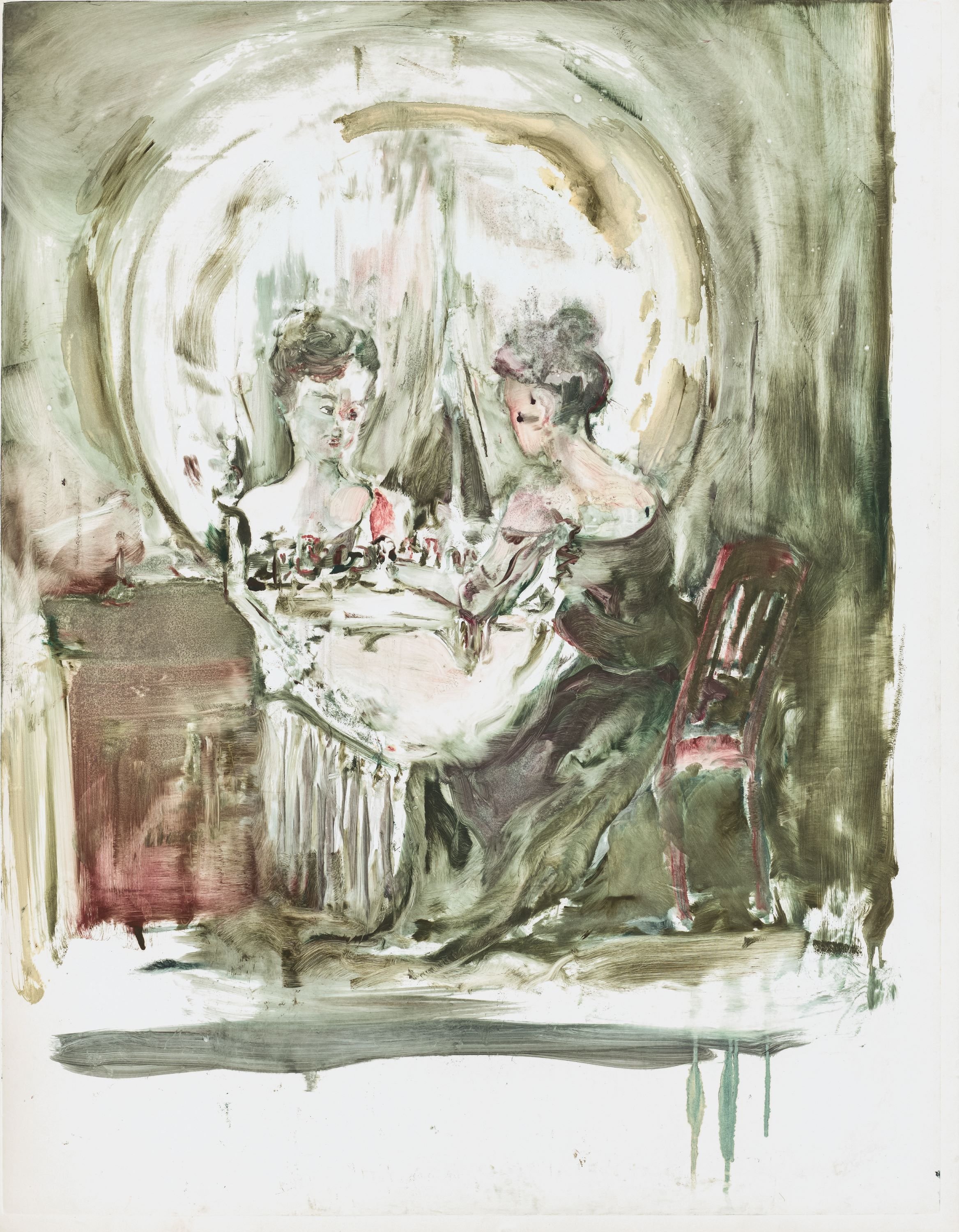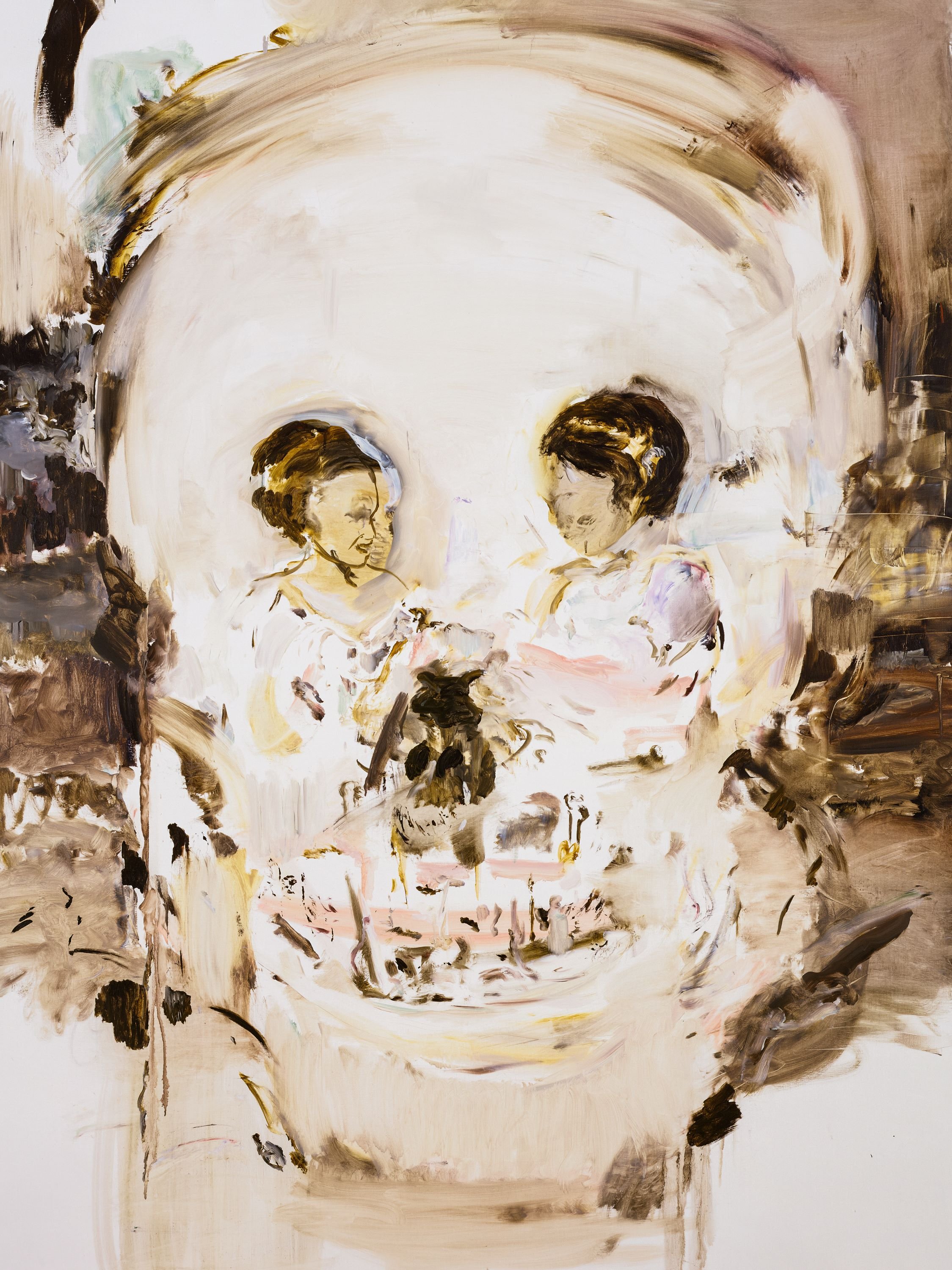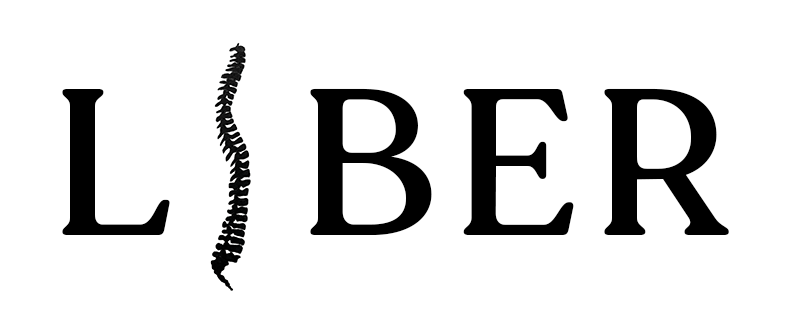
LATELY WHEN I look in the mirror, I see death. Or rather, I see the signs of creeping middle age—the widening part of my hair, the grays which overnight have become too many to pluck, the deepening smile lines—and I ponder my mortality. Yes, I know that thirty-two is not old. I’m still fifteen years younger than my ex was when he swept me off my feet ten years ago. But from here on out, I am a less and less likely candidate for male attention. I might as well be dead already.
I’m joking, of course, mostly. It’s hard to turn this kind of thinking off, conditioned as I am to find my own image in every reflective surface, gazing forever into the looking glass like heroines of European painting from Titian’s Venus with a Mirror to the Victorian lady at her toilette. John Berger traces the moralizing of this motif to biblical subjects like Susanna and the Elders, where, in Tintoretto’s telling, the nubile Susanna’s mirrorward gaze makes her “connive” with her own decrepit voyeurs. As Berger sums up, “You painted a naked woman because you enjoyed looking at her, you put a mirror in her hand and you called the painting Vanity.”
A work at the Met to which I often find myself returning is Georges de La Tour’s The Penitent Magdalen (c. 1640), an allegory in haunting chiaroscuro. In a dark night of the soul, the subject has renounced the flesh. The mirror reflects not her face but the light of a single candle; in her lap she cradles a skull, that perennial still-life reminder of another sense of “vanity”: the fleetingness of life.

When I walked into Cecily Brown: Death and the Maid (the mid-career survey on view at the Met through December 2023), I was greeted by a number of works which similarly explore at once these different denotations of vanity: a young, beautiful woman gazes into her boudoir mirror, forming, along with her own distended reflection, the secondary image of a skull. The visual pun is clever, but my first racing thought was that Brown had invented a new genre of painting to express exactly how I have come to feel toward my own mirror. In fact, this optical illusion was a common motif of Victorian illustrations, including one which Brown has re-worked for decades, Charles Allan Gilbert’s All Is Vanity (1892).
Brown resides among the pantheon of artists who, at the end of the millennium, made oil painting cool again. Her feel for the material makes old visual tropes fresh. The monotypes are themselves mirrored images. The Gibson girls are over-frosted cakes, pooling folds and flesh, accumulated strokes that transcend the evanescence of their beauty.
“Because I look, you can’t see me,” Rachel Cusk has written of Cecily Brown (quoted in Meg Whiteford’s essay on p. 14). I have no room for the Christian morality of The Penitent Magdalen, but I am interested in de La Tour’s dance of candlelight and darkness. I desire to understand the paradox of Brown’s brush, revealing and obscuring at once. Unlike my reflection, her work makes me want to look at what’s in front of me, to see what more there is to life than being seen.

